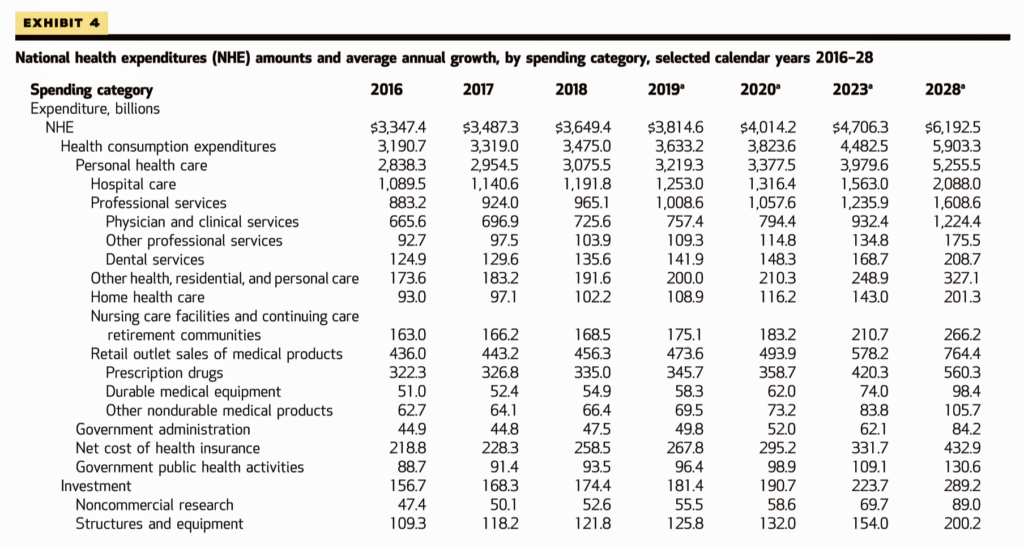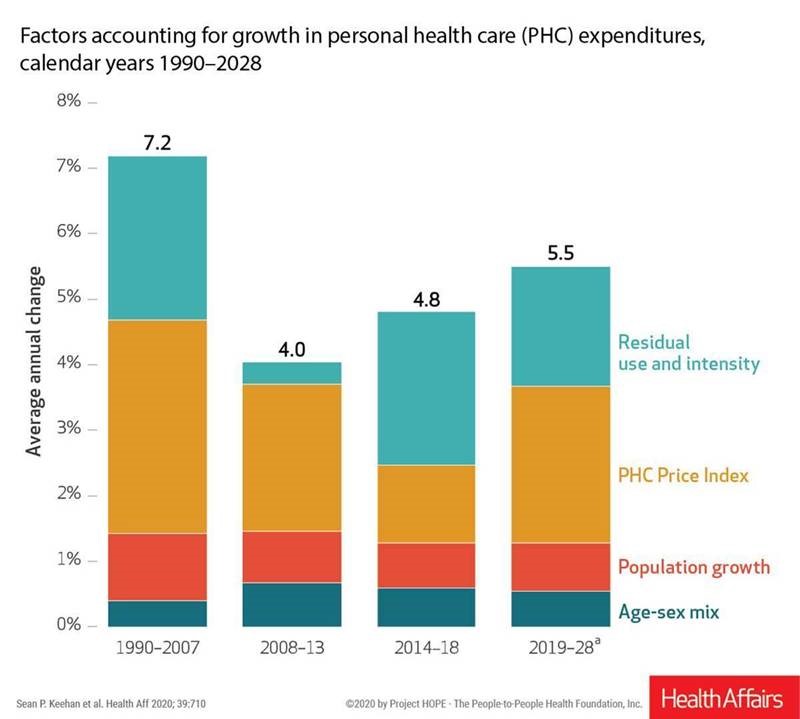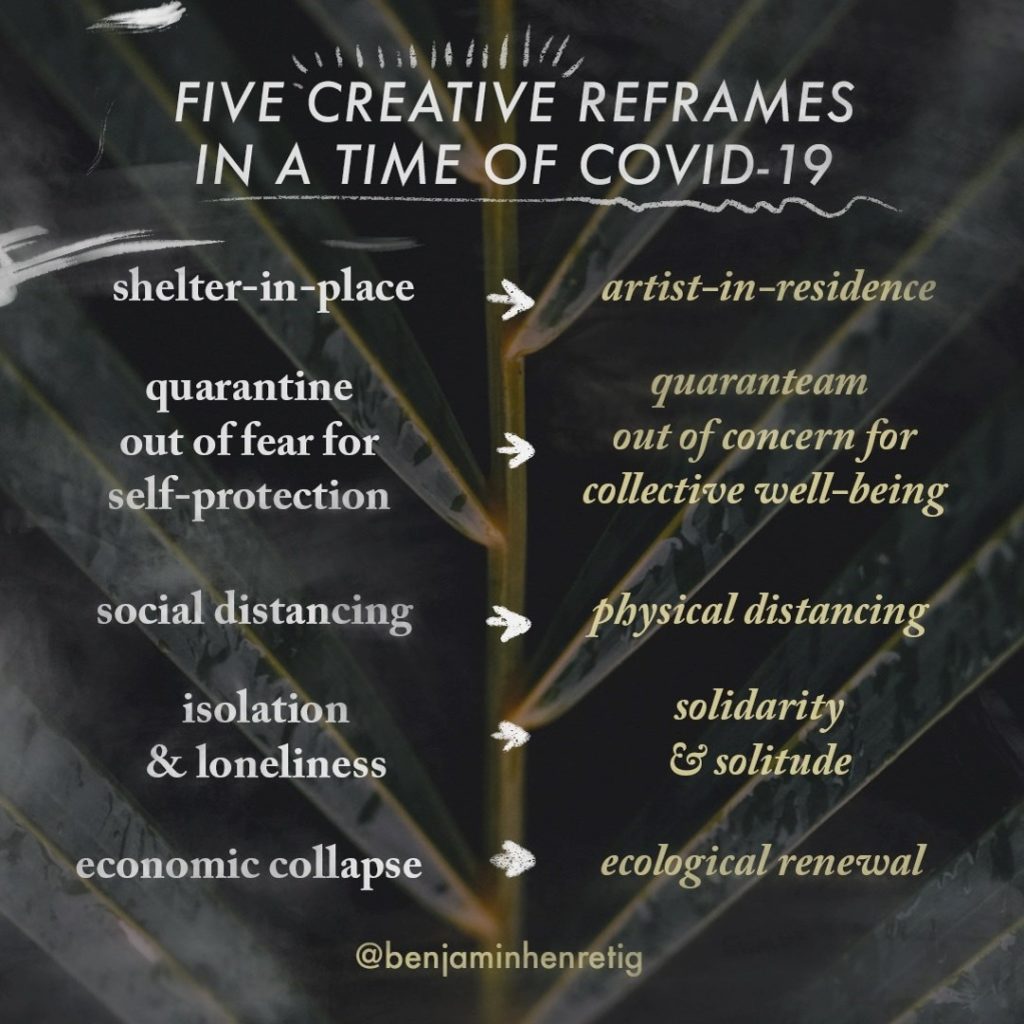 U.S. health care spending will grow to 20% of the national economy by 2028, forecasted in projections pre-published in the April 2020 issue of Health Affairs, National Health Expenditure (NHE) Projections. 2019-28: Expected Rebound in Prices Drives Rising Spending Growth.
U.S. health care spending will grow to 20% of the national economy by 2028, forecasted in projections pre-published in the April 2020 issue of Health Affairs, National Health Expenditure (NHE) Projections. 2019-28: Expected Rebound in Prices Drives Rising Spending Growth.
NHE will grow 5.4% in the decade, the model expects.
But…what a difference a pandemic could make on this forecast.
This year, NHE will be $3.8 trillion, growing to $6.2 trillion in 2028. Hospital care spending, the largest single component in national health spending, is estimated at $1.3 trillion in 2020.

These projections are based on “current law,” the team from the CMS Office of the Actuary write, “developed using actuarial and econometric modeling methods in addition to judgments about future trends that affect the health care sector.” These factors come out of the 2019 Medicare Trustees Report and include but aren’t limited to tax policy, the state of insurance marketplaces, and employer-sponsored health insurance assumptions.
Here’s the money quote: “It is important to note that there is inherent uncertainty associated with these projections…this analysis relies on assumptions about future macroeconomic conditions, such as growth in disposable personal income, economywide inflation…(and) do not account for changes that could affect national health spending or insurance coverage.”
Having used and referred to this important forecast for over a decade in my own work, I know this sentence-caveat well.
But this year, this version, the wild card of “inherent uncertainty” is now a certainty.
All bets are off on what the 2028 numbers show.
The bar chart, Exhibit 5 from the report, is always important to examine as it reflects the very-American situation of spending as price times utilization — where “it’s been the prices, stupid” since Uwe Reinhardt and team wrote their seminal work on the role of health care prices in U.S. medical spending in Health Affairs in 2003.
The certainty now is we-know-we-know we are in a pandemic that will challenge both our “fiscal” and “physical” forecasts, as I wrote in Health Populi earlier this week. Going forward from “now” for the next couple of years, the teal green part of the bar marked as “residual use and intensity” will be much larger. That’s utilization of the health care system — hospital inpatient beds, ICU beds, more medicines and vaccine therapies, more clinical staff.
That $2.1 trillion forecasted for 2028? In my scenario planning working I’m on right now for clients, this number will be revised upward…based on some quite new assumptions coming out of our C19 pandemic.
Health Populi’s Hot Points: Dr. David Blumenthal asks, “When It’s Over, Will Our Health System Be Different?” on the Commonwealth Fund website. He considers:
“In the United States, the Great Depression produced the first national social safety net, in the form of Social Security, unemployment insurance, and a raft of other programs. In England, World War II yielded the country’s beloved National Health Service. Will the coronavirus pandemic change us now?”
Dr. Blumenthal wonders whether the COVID-19 pandemic is “the moment” that will usher in a call-to-action for the United States to adopt universal health care as a civil right.
In my book, HealthConsuming: From Health Consumers to Health Citizens, I conclude with a call-to-action and my own question:
“What if…people in America were Health Citizens, where the government ensured health care as a social and civil right, health informed public policy, and people owned and controlled their heatlh data? What if home was our health hub?”
Consider where we/you are right now, at this moment: 100 million Americans are now hunkered down at home in the #StayHome and #AloneTogether life- and work-style. We’re facing first-dollar health care costs in high-deductible health plans, some of us worried about paying for medical bills related to getting tested and treated for the coronavirus. Others of us who need to are having trouble accessing our health records.
 I say to Dr. Blumenthal, indeed, in the coming weeks, as more communities climb their respective C19 curves beyond New York, Seattle, New Rochelle, New Orleans, Atlanta, Chicago, and Philadelphia, most Americans will embrace the concept of Health Citizenship–with the expectation that health care is our civil right.
I say to Dr. Blumenthal, indeed, in the coming weeks, as more communities climb their respective C19 curves beyond New York, Seattle, New Rochelle, New Orleans, Atlanta, Chicago, and Philadelphia, most Americans will embrace the concept of Health Citizenship–with the expectation that health care is our civil right.
At the same time, we’re embracing our responsibility to #FlattenTheCurve. Responsibilities, too, are part of Health Citizenship. There’s no such thing as “free” health care. We are in this together, with rights and responsibilities.
While we are in the battle of C19, we may find a gift in re-claiming our community of brothers and sisters in this foxhole that is the biggest pandemic of the 21st century….so far.
I leave you with five reframings of our current lives from the creative mind of Benjamin Henretig, in our shared era of C19. As a public health person, I’m especially drawn to bolstering my “Quaranteam.”
And, as an Artist-in-Residence, I’m creating an ABCovid Journal which, someday, I’ll feature here in the Health Populi blog.




 Interviewed live on BNN Bloomberg (Canada) on the market for GLP-1 drugs for weight loss and their impact on both the health care system and consumer goods and services -- notably, food, nutrition, retail health, gyms, and other sectors.
Interviewed live on BNN Bloomberg (Canada) on the market for GLP-1 drugs for weight loss and their impact on both the health care system and consumer goods and services -- notably, food, nutrition, retail health, gyms, and other sectors. Thank you, Feedspot, for
Thank you, Feedspot, for  As you may know, I have been splitting work- and living-time between the U.S. and the E.U., most recently living in and working from Brussels. In the month of September 2024, I'll be splitting time between London and other parts of the U.K., and Italy where I'll be working with clients on consumer health, self-care and home care focused on food-as-medicine, digital health, business and scenario planning for the future...
As you may know, I have been splitting work- and living-time between the U.S. and the E.U., most recently living in and working from Brussels. In the month of September 2024, I'll be splitting time between London and other parts of the U.K., and Italy where I'll be working with clients on consumer health, self-care and home care focused on food-as-medicine, digital health, business and scenario planning for the future...